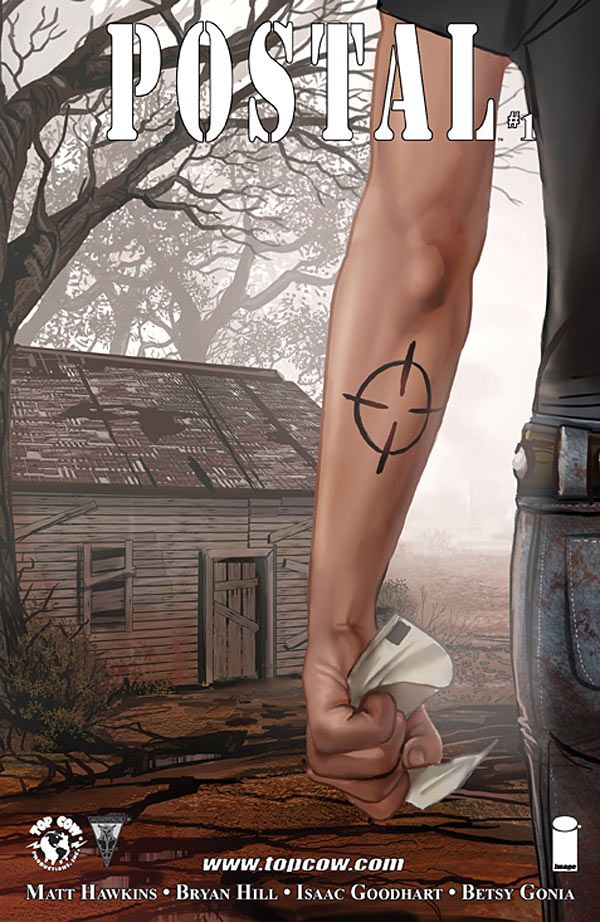"Postal" #1 is a solid, if unevenly plotted, introduction to Eden, Wyoming, a town populated with ex-convicts who have an as-yet undisclosed deal with the United States to exist as an independent province governed by its own regulations. Matt Hawkins, co-writer and creator of the book, fills the town with colorful personalities and unique voices. There aren't many good people in town and even the ones that could fall on the side of the angels are graded on a curve. Isaac Goodhart provides very straightforward page layouts which both help and hurt the story in certain places.
The one law in the town is that there is no crime allowed, and the punishment is severe for breaking that one rule. It's a lesson taught in the first issue when Mark Shiffron, a postal worker with Asperger Syndrome, tries to determine why a man on his route has red mud on his tires. The inquiry leads him to the discovery of illegal business being done in town, which elicits a public condemnation by the zealot-like town preacher.
Hawkins and co-writer Bryan Hill make Mark a relatable lead who's merely trying to do a good thing to make up for a bad deed being done. He seems unaware of the idea that actions have consequences, a dangerous thing to not comprehend in a town full of criminals. The story starts near the end, then leads us back linearly, making big jumps in the story without much transition in dialogue or art from page to page as it happens. A new mystery is introduced right after the pivotal judgment is delivered and comes almost entirely out of left field. Hopefully, this will tie into that judgment; otherwise, it feels it would have better suited the opening to the next chapter. On the other hand, the dossiers at the end of the issue are a great way to get to know many of the book's major players in a more focused fashion.
Goodhart, a storyboard artist by trade, turns in many panels that look like they are exactly that; this means the action is clear but can end up a bit too vanilla. He doesn't take too many risks in these pages and it hurts certain sequences; for instance, when Mark is shot while investigating Munchie Grove, a big piece of action has the same panel size as the one beside it. It doesn't allow the visuals to help build the tension, as no importance is placed on one or the other, sapping both moments of their impact. His art is best in the moody forest sequence with Big Injun, saturated in blacks and full of suspense.
The concept for this series has legs and, though the title belies a different type of action, I'm curious to learn more about Mark Shiffron, who looks to become an investigator as much as a postal worker. There are a lot of threads that could be tugged here and kudos to the team for building a postal code interesting enough to warrant a revisit.

